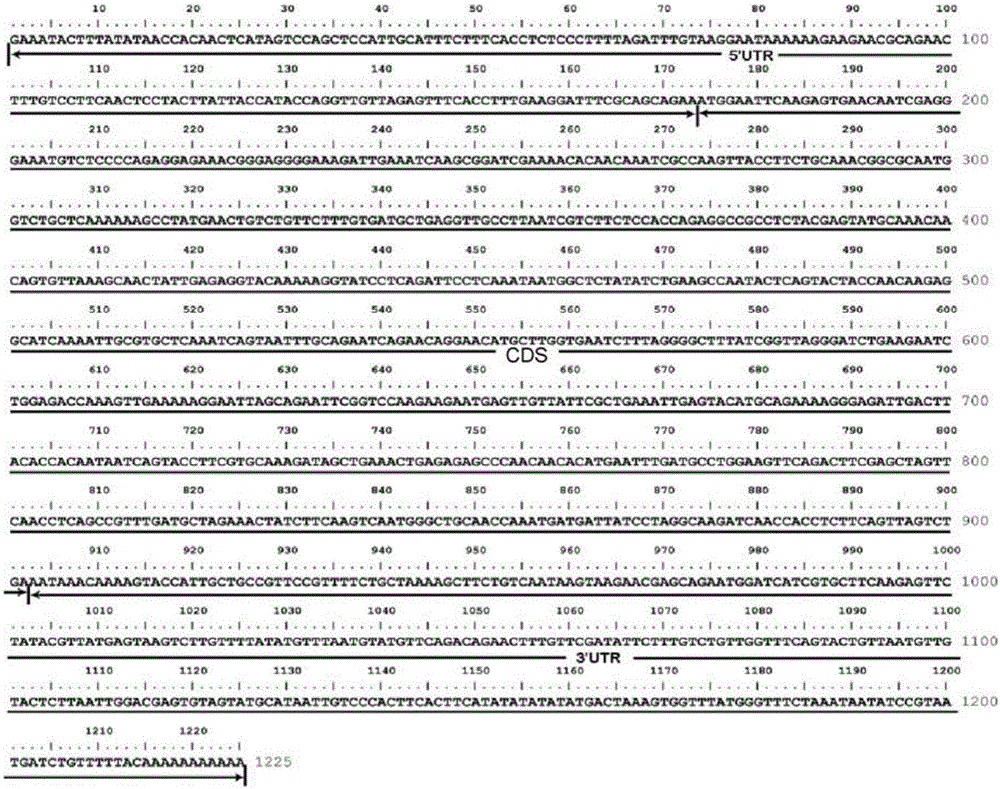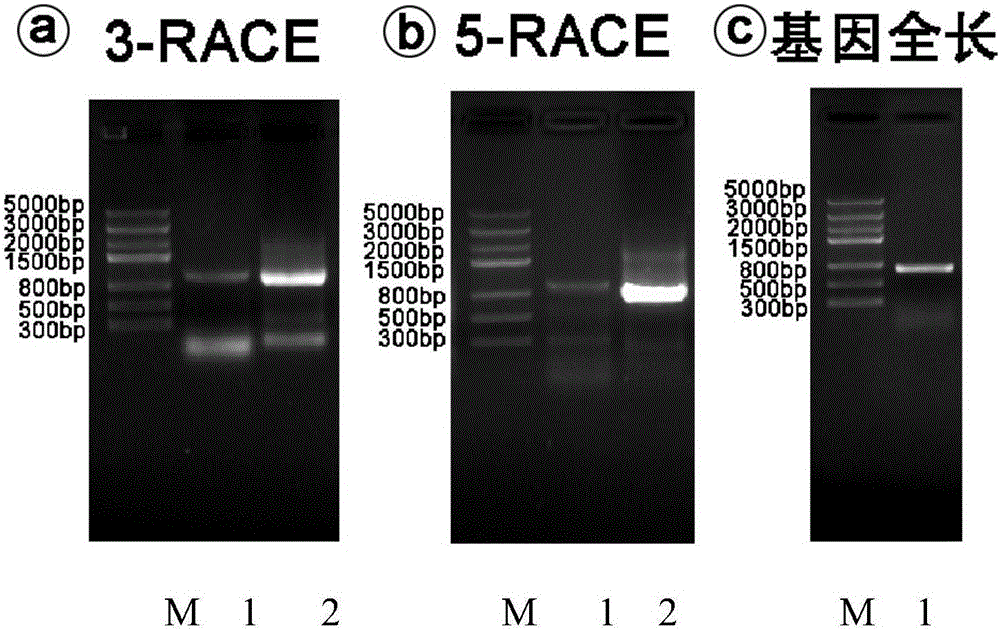CabuAG gene related to pistil and stamen development of catalpa bungei and protein and application thereof
A protein, pbi121-cabuag technology, applied in application, genetic engineering, plant genetic improvement, etc., can solve the problem that there is no AGAMOUS homologous gene research.
- Summary
- Abstract
- Description
- Claims
- Application Information
AI Technical Summary
Problems solved by technology
Method used
Image
Examples
Embodiment 1
[0025] The molecular cloning of embodiment 1 catalpa tree CabuAG gene cDNA sequence
[0026] (1) Extraction of total RNA from flower buds of Chinese catalpa
[0027] Get 300 mg of fresh catalpa flower buds with a length of about 5 mm, put them into a cryopreservation tube, and freeze them in liquid nitrogen immediately.
[0028]Use the RNA extraction kit to extract total RNA: take the required flower buds out of the -80°C ultra-low temperature refrigerator, put them in a mortar with 2mL RLT and 100μL PLAN Taid, and grind them thoroughly at room temperature; transfer the above grinding solution into a 2mL EP tube , after centrifuging at 13000rpm for 10min, take 500μL supernatant and transfer it to a new 2mL centrifuge tube; add 250μL absolute alcohol to the supernatant, blow and mix well; add the above liquid into the adsorption column, and put the adsorption column into the collection tube Add 500 μL of washing solution to the adsorption column, centrifuge at 13,000 rpm for 1...
Embodiment 2
[0038] The protein sequence of embodiment 2 Chinese catalpa CabuAG gene code
[0039] Using the primer5 software, the full-length cDNA sequence of the CabuAG gene was translated into protein sequence. The full-length cDNA sequence was 1225bp, and the CDS was 729bp. The stop codon was removed, and a total of 242 amino acids were edited. Get SEQ ID NO: 2, and according to the characteristics of the MADS-box gene, the Catalpa CabuAG protein sequence is divided into M region, I region, K region, C region and two motifs AGmotifI and AGmotifII, see for details figure 2 .
Embodiment 3
[0040] The tissue specificity of embodiment 3 Chinese catalpa CabuAG gene expression
[0041] According to the cDNA sequence full-length of Chinese catalpa tree CabuAG gene, utilize oligo6.0 software to design the primer RTAGF of semiquantitative test: 5'-CCTTCAACTCCTACTTATTACCA-3' (as shown in SEQIDNo.11) and RTAGF: 5'-CCATTCTGCTCGTTCTTACTTAT-3' ( As shown in SEQ ID No.12). Use PCR to detect its specificity, and it can only be used under the premise of ensuring that the primers only specifically amplify the corresponding genes. Taking the catalpa actin gene as the positive control of the semi-quantitative test, the primers of the actin gene are CabuactinF: 5'-TCACACTGGTGTGATGGTTG-3' (as shown in SEQ ID No.13) and CabuactinR: 5'-AGTTCTTCTCCACAGCAGAG-3' (as shown in SEQ ID No.14 shown). And adjust the detection band brightness by the proportion of the first strand cDNA template amount of young leaves, sepals, petals, stamens and pistils. Semi-quantitative PCR reaction progra...
PUM
 Login to View More
Login to View More Abstract
Description
Claims
Application Information
 Login to View More
Login to View More - R&D
- Intellectual Property
- Life Sciences
- Materials
- Tech Scout
- Unparalleled Data Quality
- Higher Quality Content
- 60% Fewer Hallucinations
Browse by: Latest US Patents, China's latest patents, Technical Efficacy Thesaurus, Application Domain, Technology Topic, Popular Technical Reports.
© 2025 PatSnap. All rights reserved.Legal|Privacy policy|Modern Slavery Act Transparency Statement|Sitemap|About US| Contact US: help@patsnap.com



